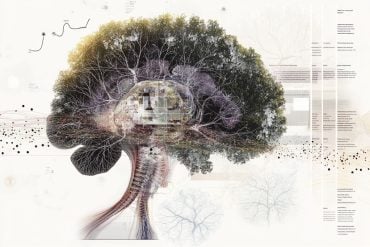Summary: The nucleus reuniens is responsible for coordinating synchronous slow waves between the prefrontal cortex and hippocampus during sleep. The findings suggest the nucleus reuniens plays a critical role in sleep-dependant memory consolidation.
Source: University of Alberta
Neuroscientists at the University of Alberta have identified a mechanism that may help build memories during deep sleep, according to a new study.
This study centered on the role of the nucleus reuniens, an area which connects two other brain structures involved in creating memories–the prefrontal cortex and the hippocampus–and may coordinate their activity during slow-wave sleep.
“Slow-waves during sleep benefit our memories for personal experiences, likely due to coordinated activity in the prefrontal cortex and hippocampus,” explained Brandon Hauer, PhD candidate in the Faculty of Science and lead author on the study. “We found that the nucleus reuniens is responsible for coordinating synchronous, slow-waves between these two structures. This means that the reuniens may play an essential role for sleep-dependent memory consolidation of events.”
Slow-wave sleep is the deepest stage of sleep, during which the brain oscillates at a very slow, once-per-second rhythm. It is crucial for muscle and brain recovery, and has been shown to play a role in memory consolidation.

“Before this study, we did not know what was responsible for connecting the prefrontal cortex and the hippocampus,” added Hauer, who conducted the research under the supervision of Clay Dickson, professor in the Department of Psychology and Silvia Pagliardini, associate professor in the Department of Physiology. “This under-studied and relatively unknown brain area likely has a substantial role in forming long-term memories while you sleep. So if you studied hard for a test and then slept on it, you may have to thank your nucleus reuniens for turning that knowledge into a more permanent memory.”
Source:
University of Alberta
Media Contacts:
Katie Willis – University of Alberta
Image Source:
The image is in the public domain.
Original Research: Open access
“The Reuniens Nucleus of the Thalamus Has an Essential Role in Coordinating Slow-Wave Activity between Neocortex and Hippocampus”. Brandon E. Hauer, Silvia Pagliardini and Clayton T. Dickson.
eNeuro doi:10.1523/ENEURO.0365-19.2019.
Abstract
The Reuniens Nucleus of the Thalamus Has an Essential Role in Coordinating Slow-Wave Activity between Neocortex and Hippocampus
Researchers and educators have long wrestled with the question of how best to teach their clients be they humans, non-human animals or machines. Here, we examine the role of a single variable, the difficulty of training, on the rate of learning. In many situations we find that there is a sweet spot in which training is neither too easy nor too hard, and where learning progresses most quickly. We derive conditions for this sweet spot for a broad class of learning algorithms in the context of binary classification tasks. For all of these stochastic gradient-descent based learning algorithms, we find that the optimal error rate for training is around 15.87% or, conversely, that the optimal training accuracy is about 85%. We demonstrate the efficacy of this ‘Eighty Five Percent Rule’ for artificial neural networks used in AI and biologically plausible neural networks thought to describe animal learning.







